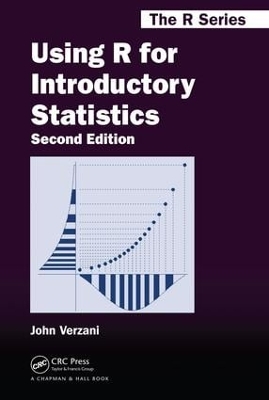Chapman & Hall/CRC The R
3 total works
The second edition of a bestselling textbook, Using R for Introductory Statistics guides students through the basics of R, helping them overcome the sometimes steep learning curve. The author does this by breaking the material down into small, task-oriented steps. The second edition maintains the features that made the first edition so popular, while updating data, examples, and changes to R in line with the current version.
See What's New in the Second Edition:
- Increased emphasis on more idiomatic R provides a grounding in the functionality of base R.
- Discussions of the use of RStudio helps new R users avoid as many pitfalls as possible.
- Use of knitr package makes code easier to read and therefore easier to reason about.
- Additional information on computer-intensive approaches motivates the traditional approach.
- Updated examples and data make the information current and topical.
The book has an accompanying package, UsingR, available from CRAN, R's repository of user-contributed packages. The package contains the data sets mentioned in the text (data(package="UsingR")), answers to selected problems (answers()), a few demonstrations (demo()), the errata (errata()), and sample code from the text.
The topics of this text line up closely with traditional teaching progression; however, the book also highlights computer-intensive approaches to motivate the more traditional approach. The authors emphasize realistic data and examples and rely on visualization techniques to gather insight. They introduce statistics and R seamlessly, giving students the tools they need to use R and the information they need to navigate the sometimes complex world of statistical computing.
Programming Graphical User Interfaces in R
by Michael Lawrence and John Verzani
Programming Graphical User Interfaces with R introduces each of the major R packages for GUI programming: RGtk2, qtbase, Tcl/Tk, and gWidgets. With examples woven through the text as well as stand-alone demonstrations of simple yet reasonably complete applications, the book features topics especially relevant to statisticians who aim to provide a practical interface to functionality implemented in R. The book offers:
- A how-to guide for developing GUIs within R
- The fundamentals for users with limited knowledge of programming within R and other languages
- GUI design for specific functions or as learning tools
The accompanying package, ProgGUIinR, includes the complete code for all examples as well as functions for browsing the examples from the respective chapters. Accessible to seasoned, novice, and occasional R users, this book shows that for many purposes, adding a graphical interface to one's work is not terribly sophisticated or time consuming.


